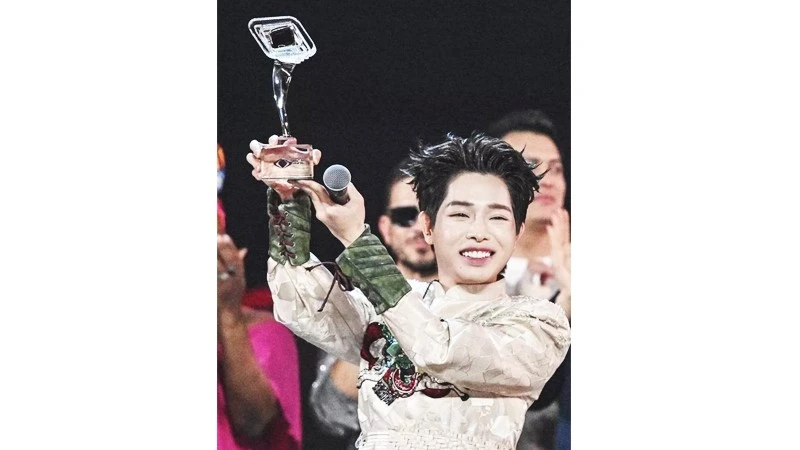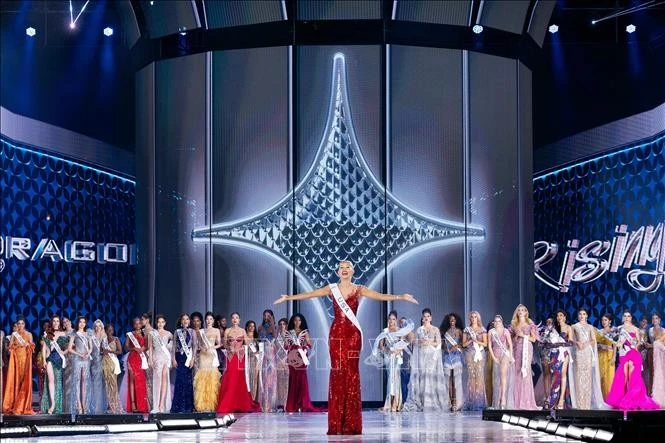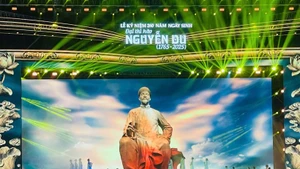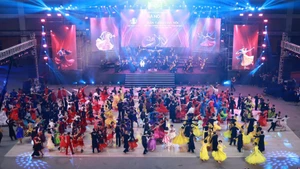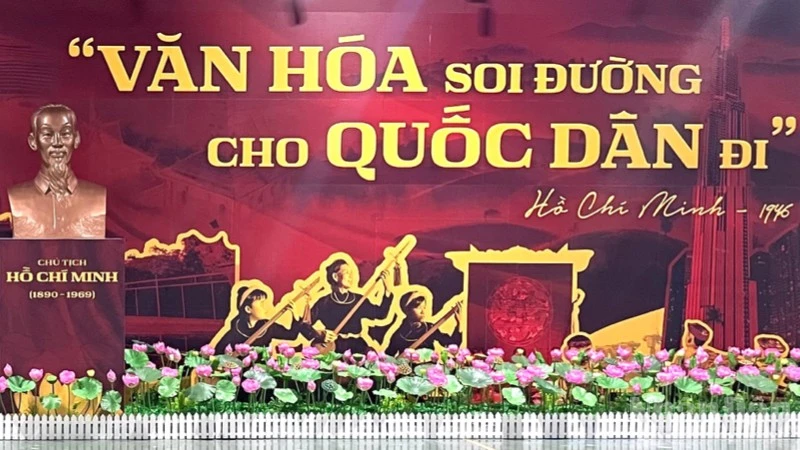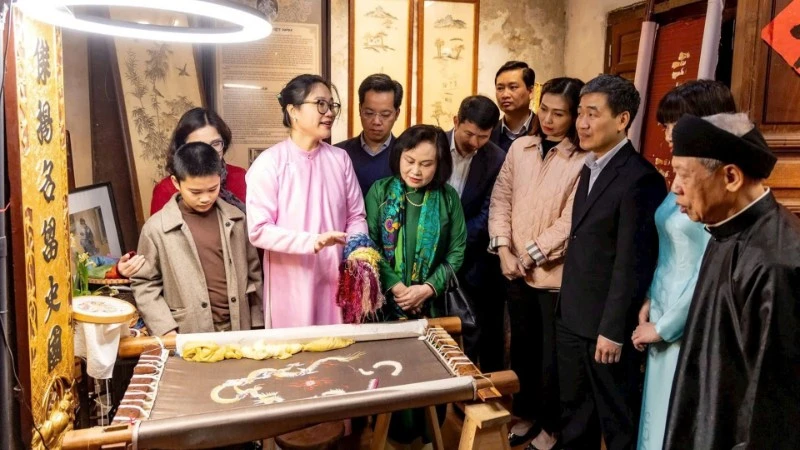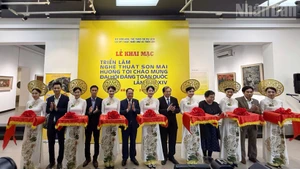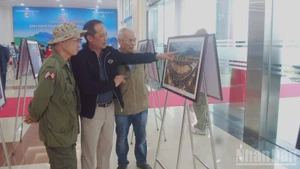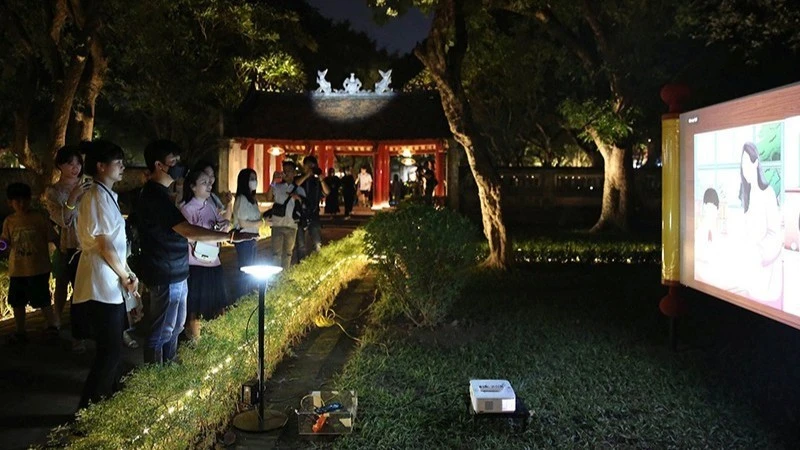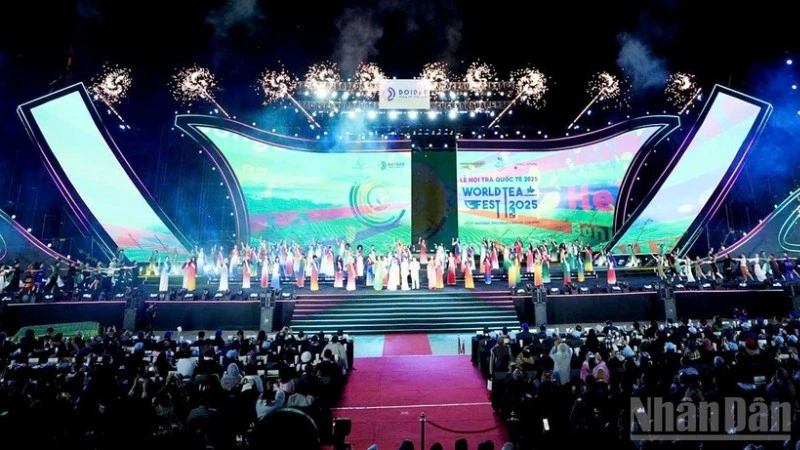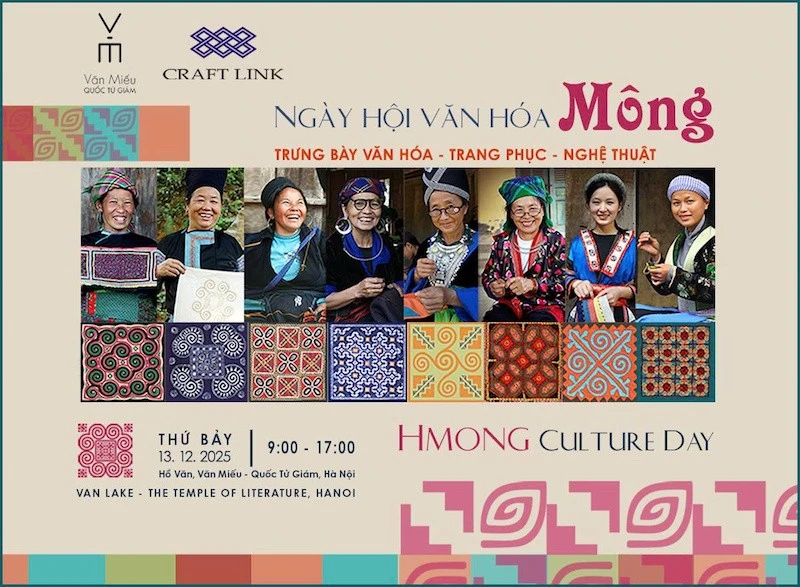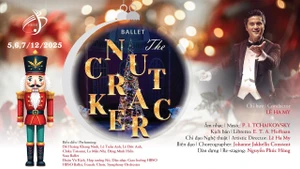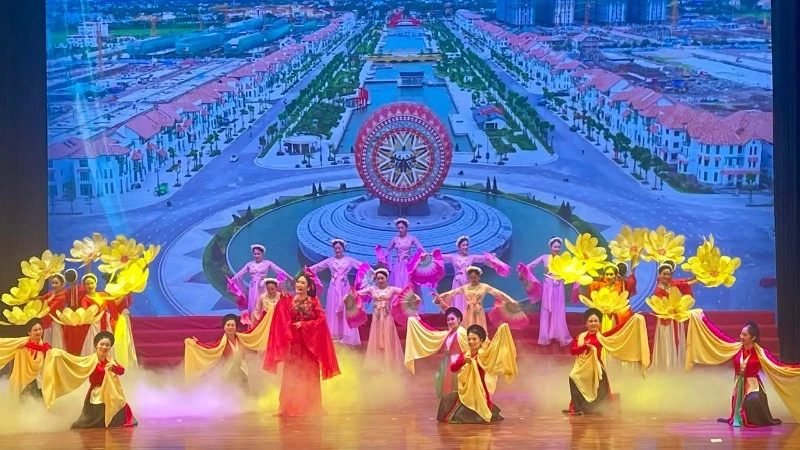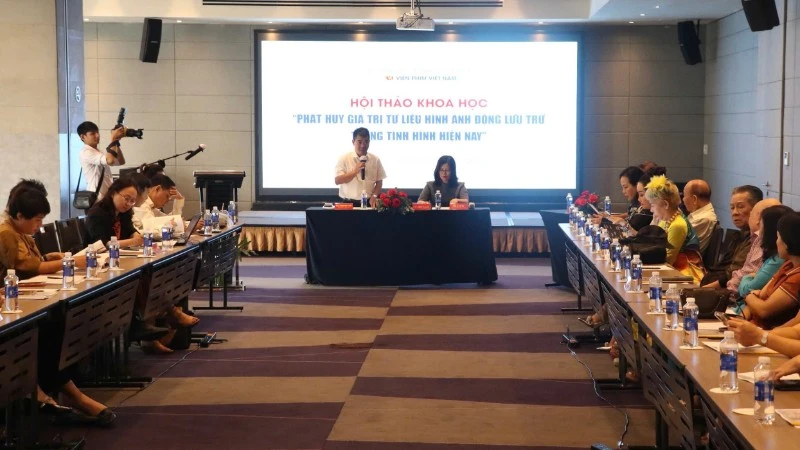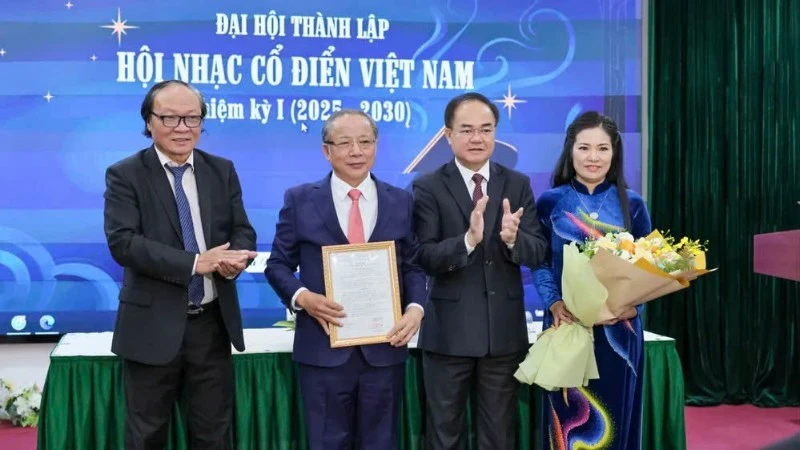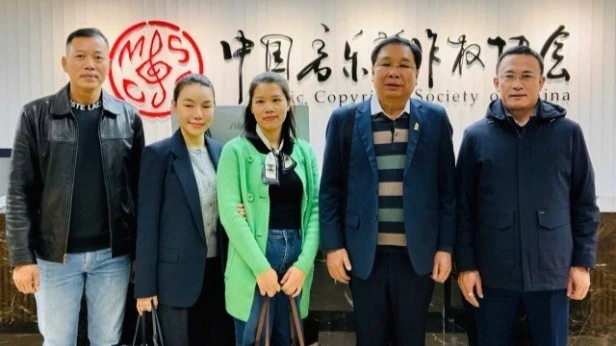Folk culture is not a “relic”
Preserving and engaging in dialogue with the cultural treasures of past generations shows that affection for heritage has become a vital source of creativity in the global cultural landscape. A vivid example is singer Duc Phuc, who won the Intervision 2025 competition in Russia with his performance of “Phu Dong Thien Vuong” (Saint Giong), composed by Ho Hoai Anh. The piece received wide acclaim from international media for its creative fusion of Vietnamese spirit and global artistry.
Not long before that, singer Phuong My Chi also captivated audiences as a standout name at Sing!Asia, where all of her performances—each proudly rooted in Vietnamese folk music—won enthusiastic applause. In the song “Vu tru co anh” (The Universe Has You), she blended ca tru (ceremonial singing) with contemporary rhythms; “Rock Hat Gao” (Rock Rice) fused modern rock energy with folk tones; while her mashup of “Ly Bac Bo” (a folk song on the north) and “Day xe bo” (Pushing the cart) drew inspiration from traditional melodies. These performances brought forward a rustic yet modern portrait of Vietnamese culture—told through music that was both heartfelt and globally engaging.
In reality, folk colours have never ceased to flow; they simply evolve with time, shaped by both internal and external influences. Today’s artists, while well-versed in international music trends, remain deeply committed to the question of Vietnamese identity. Though each artist forges a different path, they share a common belief that folk culture is not a relic to be preserved but a creative resource to be reborn.
From the early experiments of composers like Quoc Trung, Tran Manh Hung, and Do Bao to the present day, a whole generation of artists has been building bridges between the local and the global. They have shaped the genre known as “contemporary fold”, which blends traditional Vietnamese aesthetics with modern sounds such as EDM, jazz, and world music.
Composer Nguyen Quang Long explains that the enduring appeal of traditional arts lies in their ability to preserve cultural memory while touching the deepest spiritual layers of Vietnamese identity. “For young people today—living in a fast-changing world—cheo, xam (ballads once sung by wandering blind musicians), chau van, and don ca tai tu (a form of folk singing and music developed in southern Viet Nam) become emotional anchors that help them reconnect with their roots and affirm their identity. Moreover, when young artists breathe new life into folk traditions through creative reinterpretation, traditional art becomes vibrant, accessible, and deeply inspiring,” he shared.

Responsibility from Government, cultural managers, and educational institutions
Unlike pure restoration, contemporary folk music allows artists to reinterpret traditional elements, infusing them with individual creativity and positioning them within modern artistic practice. This reflects a broader cultural shift, bringing heritage out of festivals and into everyday life. Examples such as Phuong My Chi and Duc Phuc, whose performances have achieved strong international resonance, demonstrate that traditional Vietnamese music can become a form of “soft export” when reimagined through a global visual and emotional language.
The flexibility in reimagining heritage has made contemporary folk music an open artistic space — where various styles, techniques, and experiments can coexist, as long as the spirit and cultural essence remain intact. This modern approach by artists has, in turn, sparked a transformation among audiences. Once considered “difficult to listen to” or “distant,” folk music is now reaching broader audiences, especially younger generations, thanks to its renewed structure, modern arrangements, and captivating stage presentations.
For this genre to develop sustainably, it cannot rely solely on a few pioneering artists or elements of chance. A comprehensive cultural ecosystem is needed — one that includes support and investment from government agencies and cultural management bodies for projects rooted in national traditions. Educational institutions should also introduce this contemporary reinterpretation of folk culture into their curricula, while multimedia platforms can play a vital role in bringing high-quality, artistically valuable works to both domestic and international audiences.
According to musician Nguyen Quang Long, the key for Vietnamese heritage to resonate globally lies in preserving its core identity while engaging in dialogue with modernity. It is crucial to clearly distinguish between traditional heritage and modern music that draws inspiration from it, to determine the most appropriate artistic approach for each case. “Artists may innovate through new arrangements or fusion with contemporary genres,” he emphasised, “but they must retain the language and spirit of Vietnamese melodies. If they chase foreign trends superficially or commercialise excessively, their works risk becoming hybrid imitations devoid of authenticity.”
